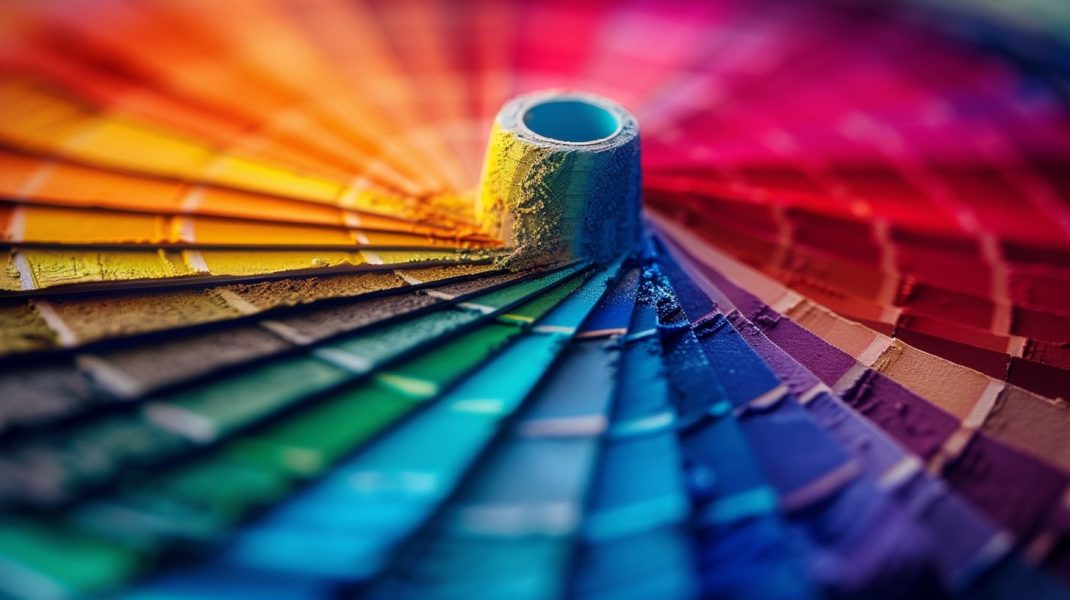Color therapy, often regarded as a form of holistic healing, offers a captivating approach to addressing various mental obstacles that individuals may encounter in their daily lives. Rooted in the belief that colors possess unique vibrations capable of influencing emotions and mental states, color therapy has gained recognition for its ability to promote emotional balance, enhance mood, and alleviate psychological challenges.
By understanding the profound impact of colors on the human psyche, individuals can harness the therapeutic benefits of specific hues to dissolve mental obstacles and cultivate a greater sense of wellbeing. Now, let’s explore the “Shades of Success: How Color Therapy Dissolves 12 Mental Obstacles,” unveiling the transformative power of colors in overcoming anxiety, depression, stress, and other psychological barriers that hinder personal growth and fulfillment.
Here are the twelve mental obstacles that color therapy can help dissolve, along with explanations of how each obstacle is addressed:
1. Anxiety: Color therapy can help reduce anxiety by promoting relaxation and calming the nervous system. Soft and cool colors like blue and green have been found to have soothing effects, helping to alleviate feelings of stress and worry. By surrounding oneself with these calming colors or visualizing them during relaxation exercises, individuals can ease anxiety symptoms and achieve a greater sense of calmness and tranquility.
2. Depression: Color therapy can uplift mood and alleviate symptoms of depression by stimulating the production of neurotransmitters associated with happiness and well-being. Bright and vibrant colors like yellow and orange can evoke feelings of joy and optimism, helping to counteract feelings of sadness and lethargy. By incorporating these uplifting colors into daily life, individuals can boost their mood and regain a sense of positivity and vitality.
3. Stress: Color therapy can reduce stress levels by promoting relaxation and inducing a sense of calmness. Soft and muted colors like pastel shades of blue and lavender have been shown to have calming effects on the nervous system, helping to lower cortisol levels and alleviate stress. By surrounding oneself with these soothing colors or engaging in relaxation exercises that incorporate visualization, individuals can reduce stress and restore emotional balance.
4. Low Self-Esteem: Color therapy can boost self-esteem and promote self-confidence by instilling feelings of empowerment and positivity. Warm and empowering colors like red and orange can evoke a sense of strength and courage, helping individuals to overcome self-doubt and insecurity. By surrounding oneself with these empowering colors or wearing clothing in shades that make them feel confident, individuals can enhance their self-esteem and project a more assertive and self-assured demeanor.
5. Negative Thinking: Color therapy can shift negative thinking patterns by promoting a more positive and optimistic outlook on life. Bright and cheerful colors like yellow and pink can uplift mood and foster feelings of hope and optimism, helping individuals to focus on the bright side of situations. By surrounding oneself with these positive colors or visualizing them during mindfulness exercises, individuals can reframe negative thoughts and cultivate a more positive mindset.
6. Lack of Focus: Color therapy can improve focus and concentration by stimulating the brain and enhancing cognitive function. Bright and stimulating colors like red and orange can increase alertness and mental clarity, helping individuals to stay focused and attentive. By incorporating these energizing colors into their environment or using them as visual cues during tasks that require concentration, individuals can improve their ability to focus and achieve greater productivity.
7. Fear of Failure: Color therapy can help overcome fear of failure by instilling feelings of confidence and resilience. Bold and empowering colors like purple and gold can evoke a sense of strength and determination, helping individuals to overcome self-doubt and take risks. By surrounding oneself with these empowering colors or visualizing them during moments of doubt, individuals can cultivate a mindset of success and embrace challenges with courage and optimism.
8. Negative Body Image: Color therapy can promote body positivity and self-acceptance by fostering feelings of self-love and appreciation. Soft and nurturing colors like pink and peach can evoke a sense of warmth and compassion, helping individuals to embrace their bodies with kindness and acceptance. By surrounding oneself with these nurturing colors or wearing clothing in shades that make them feel comfortable and confident, individuals can improve their body image and develop a healthier relationship with their physical appearance.
9. Procrastination: Color therapy can overcome procrastination by boosting motivation and energizing the mind. Vibrant and stimulating colors like yellow and orange can evoke feelings of enthusiasm and vitality, helping individuals to overcome inertia and take action. By surrounding oneself with these energizing colors or using them as visual cues to signal the start of a task, individuals can overcome procrastination and achieve greater productivity.
10. Lack of Creativity: Color therapy can enhance creativity and inspire innovation by stimulating the imagination and enhancing cognitive flexibility. Bold and imaginative colors like turquoise and magenta can evoke a sense of creativity and inspiration, helping individuals to think outside the box and explore new ideas. By surrounding oneself with these stimulating colors or engaging in creative activities that incorporate them, individuals can unleash their creative potential and express themselves more freely.
11. Perfectionism: Color therapy can help overcome perfectionism by promoting self-acceptance and embracing imperfection. Soft and gentle colors like blue and green can evoke a sense of peace and tranquility, helping individuals to let go of unrealistic standards and embrace their flaws. By surrounding oneself with these calming colors or practicing mindfulness exercises that promote acceptance, individuals can cultivate a healthier relationship with perfectionism and learn to appreciate themselves as they are.
12. Lack of Motivation: Color therapy can boost motivation and inspire action by energizing the mind and stimulating the senses. Dynamic and vibrant colors like red and yellow can evoke feelings of passion and excitement, helping individuals to feel more engaged and motivated. By surrounding oneself with these energizing colors or incorporating them into their environment in subtle ways, individuals can increase their motivation and drive to pursue their goals and aspirations.


